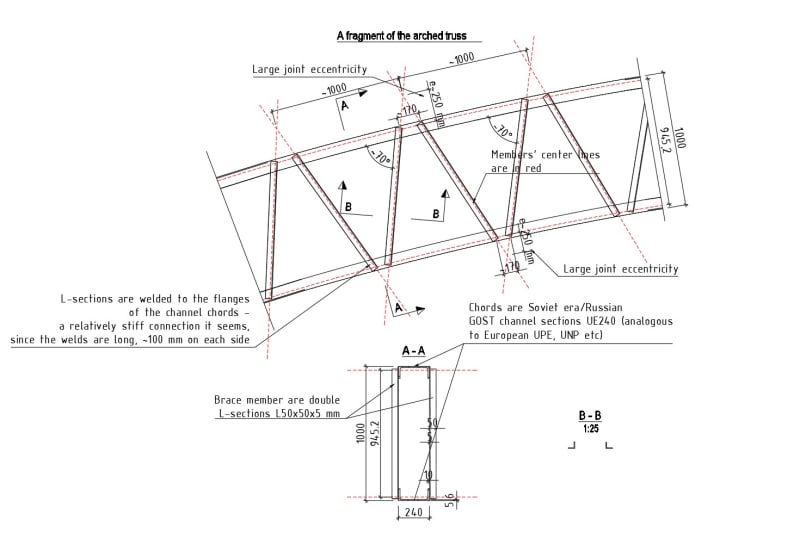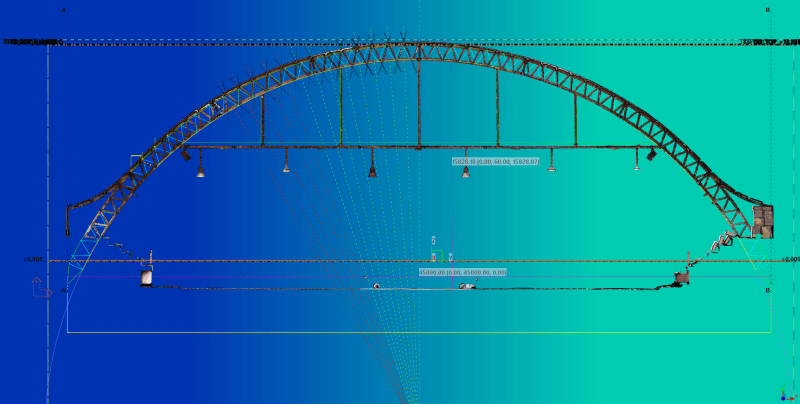nivoo_boss
Structural
- Jul 15, 2021
- 132
Hello everyone!
I'm doing an analysis of a Soviet era steel arched truss. The arc has a span of around 45 m and a height of around 16 m. The height of the truss is 1 m. The chords are 240 mm wide channel sections (Soviet era/Russian GOST UE240 sections). The braces members are double L50x50x5 mm angle sections. The roof is going to be insulated and load bearing sheeting is installed on the top chord, which is going to introduce bending moments between the joints - earlier there were purlins on joints. Other than that, the loads should not increase much, though of course wind and snow loads and their partial safety factors are larger than they were in the Soviet codes back when this structure was designed.
I'm looking for some advice on how to model it adequately to check it bearing capacity and see if some strengthening is needed. What I noticed about the truss joints is their very large eccentricity, around 250 mm. How should I take that into account if at all? In a structure like this it seems the brace members do not develop too large forces, the chords seem to take most of it. Below is a drawing I made explaining the situation.

I've seen some similar threads here and have read some papers where basically the advice is to model the eccentricity with rigid arms - in my case 250 mm long rigid arms perpendicular to the chords, which is a lot. Or if you have any other advice, I would be very grateful. I attached a screenshot of a section from point cloud of the structure and a photo of a fragment of the truss.

Thanks in advance.
I'm doing an analysis of a Soviet era steel arched truss. The arc has a span of around 45 m and a height of around 16 m. The height of the truss is 1 m. The chords are 240 mm wide channel sections (Soviet era/Russian GOST UE240 sections). The braces members are double L50x50x5 mm angle sections. The roof is going to be insulated and load bearing sheeting is installed on the top chord, which is going to introduce bending moments between the joints - earlier there were purlins on joints. Other than that, the loads should not increase much, though of course wind and snow loads and their partial safety factors are larger than they were in the Soviet codes back when this structure was designed.
I'm looking for some advice on how to model it adequately to check it bearing capacity and see if some strengthening is needed. What I noticed about the truss joints is their very large eccentricity, around 250 mm. How should I take that into account if at all? In a structure like this it seems the brace members do not develop too large forces, the chords seem to take most of it. Below is a drawing I made explaining the situation.

I've seen some similar threads here and have read some papers where basically the advice is to model the eccentricity with rigid arms - in my case 250 mm long rigid arms perpendicular to the chords, which is a lot. Or if you have any other advice, I would be very grateful. I attached a screenshot of a section from point cloud of the structure and a photo of a fragment of the truss.

Thanks in advance.
